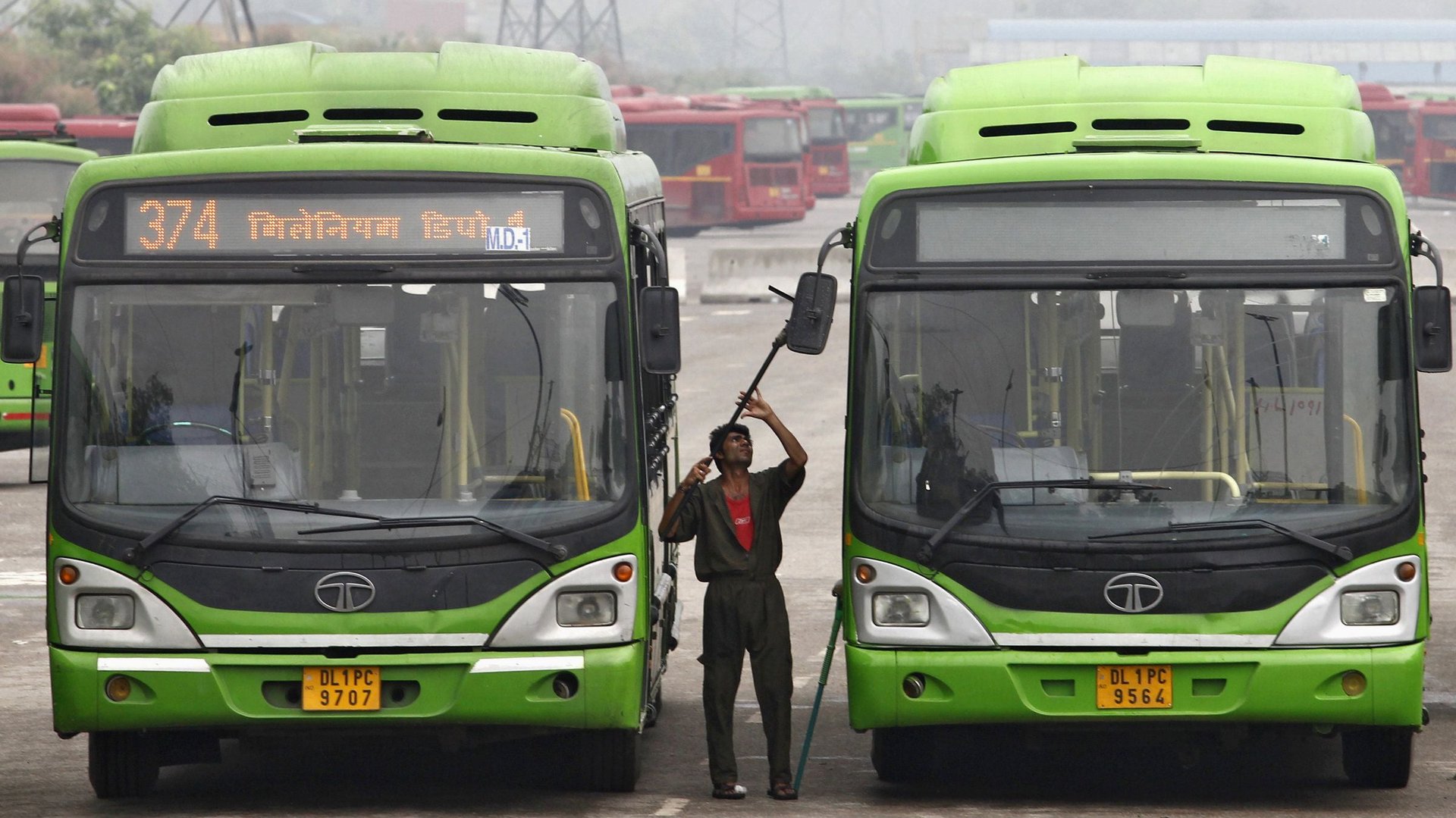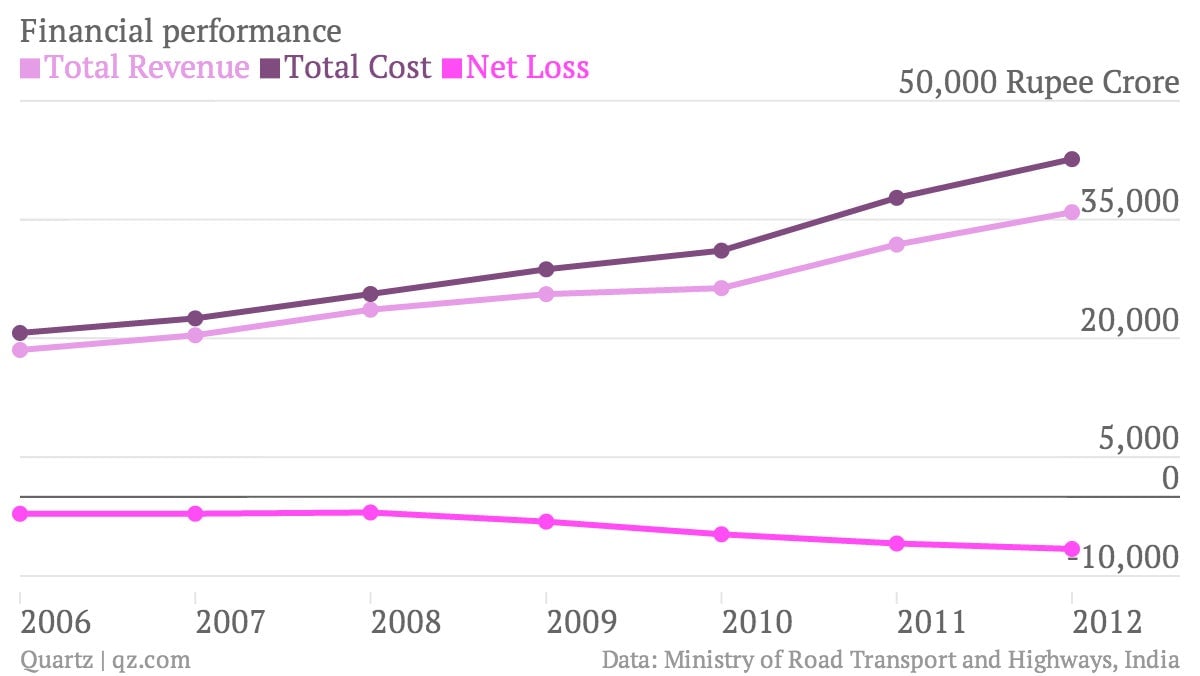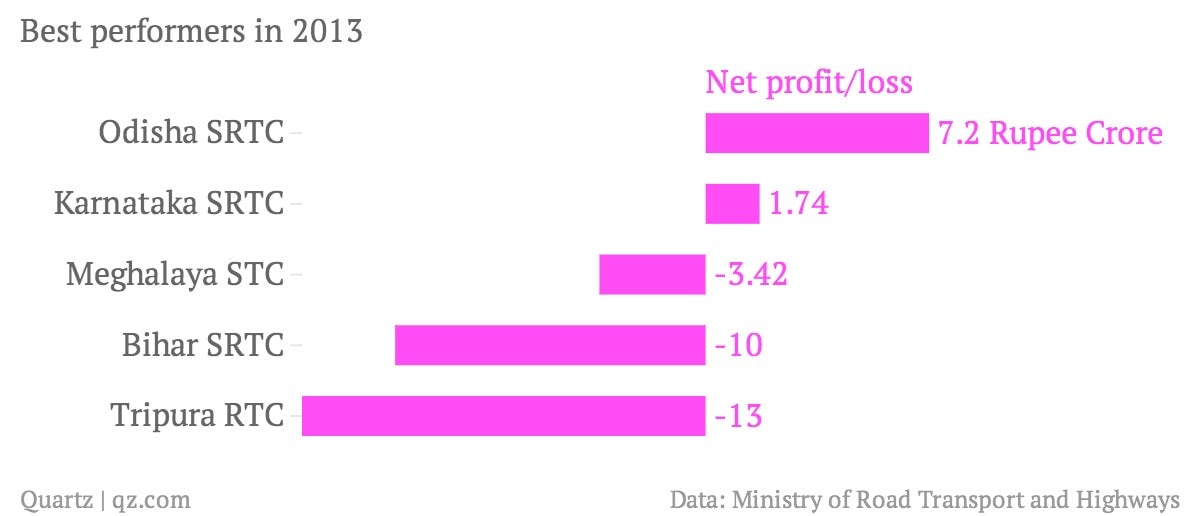India has another transportation network that’s bleeding money
They are Indian Railways’ long-forgotten cousins, the ones that still provide connectivity to millions and yet has been bypassed by reform.


They are Indian Railways’ long-forgotten cousins, the ones that still provide connectivity to millions and yet has been bypassed by reform.
Buses.
The country’s burgeoning state-owned bus network carries nearly 30 billion passengers every year—more than three times that of the railways’ total passengers. The Indian Railways transports about 8.2 billion passengers across 1 trillion kilometers.
But almost all of the country’s 38 State Road Transport Undertakings, as they’re known in official parlance, are bleeding money, collectively posting a loss of Rs 6,719.17 crore in 2013. That’s more than $1 billion.
Yet no one seems bothered.


Among the worst performers are bus networks that serve two of India’s biggest cities: Delhi Transport Corporation and the Bombay Electric Supply & Transport (BEST) Undertaking in Mumbai.
The Delhi Transport Corporation, which runs a network of more than 5,500 buses, posted a loss of nearly Rs 3,000 crore last year, with about 50% in interest costs and 30% in staff costs.

And nationwide, only two state-run networks made a profit.

There are two major reasons why these transport corporations are hemorrhaging money: Labor and fuel costs. On an average, these two components account for more than 70% of the total cost for the 38 undertakings for which 2012-2013 data is available.

Although the total manpower of state-run bus corporations has declined by 0.07% between 2012 and 2013 to 729,118 employees, these cash-strapped undertakings have to pay government-sanctioned salaries and raises every year. Constant increases in fuel costs, further accelerated by deregulation of diesel prices, have worsened finances for transportation corporations, the second-largest consumers of diesel in India.
“At the aggregate level, without factoring in diesel price hikes, a fare hike of 10.8% is required for SRTCs (State Road Transport Corporations) to breakeven. Even to maintain existing losses, a fare hike of 7.5% is required,” India Ratings & Research said in a report last year (pdf).
“However, a fare hike of 18.3% is required for SRTCs to break even after a diesel price hike,” it added.
That is a difficult proposition for most state governments, which control these transport corporations.
In West Bengal, for instance, transport department officials were reportedly afraid of losing their jobs if they proposed a fare hike to their minister. And in Bangalore, commuters have been unwilling to pay the requisite fare after rates were hiked last month, according to bus conductors.
But more than merely fare hikes, it has been governmental unwillingness to reform the sector that’s led to this quagmire. There have been recommendations for cuts in excise duty and other taxes, automatic fare revision systems and more autonomy for these transport corporations.
Moreover, there is a need to compensate transport corporations for operating in rural areas, a substantial part of their combined footprint, where fares are suppressed to keep bus travel affordable.
Instead of spending billions to build new infrastructure, maybe the governments—both state and center—should consider revamping its expansive bus network.
After all, it does carry more Indians than the venerable railways.